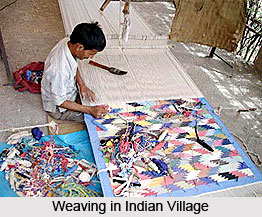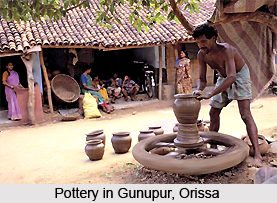 One glimpse at the Indian village transport is adequate to decipher that the traditional mode of transports in rural village comprised palanquins, bullock carts and horse carriages. Besides these, the beasts of burden were also used in ancient days for moving from one place to another. Indian village folk walked to travel from one place to another. As civilisation ushered to the Iron Age from Stone Age, the Indian village transports also developed gradually. The palanquin or `palkee` was introduced as a village transport mainly for the convenience of women travelers.
One glimpse at the Indian village transport is adequate to decipher that the traditional mode of transports in rural village comprised palanquins, bullock carts and horse carriages. Besides these, the beasts of burden were also used in ancient days for moving from one place to another. Indian village folk walked to travel from one place to another. As civilisation ushered to the Iron Age from Stone Age, the Indian village transports also developed gradually. The palanquin or `palkee` was introduced as a village transport mainly for the convenience of women travelers.
Palkee
During the earlier days, palanquins or "palkee" were popular means of transport for women of all social strata. The decoration of the palkee referred to the status of the owner. The evolution of palanquins is rooted in the tradition of carrying the deities or idols; later during 15th century it was used for the transportation of common people. On the other hand, men generally utilised horses as modes of transportation.
Bullock Carts
With time, bullock carts evolved as a popular mode of transport in Indian villages. These animals were widely used for ploughing fields and later, they were also made to pull carts. Most of the Indian villages are nestled by riverside. To travel to another village or to the town, the village people had to cross the rivers. For this purpose boats were used. Even today boats are commonly found in Indian villages and they remain as the only means of communication for the villagers.
 Horse Carriages
Horse Carriages
During the British era the horse carriages evolved and eventually came to be widely used as transports in the Indian villages. These means of transport are prevalent till date. However, the modern form of horse carriages in the Indian villages is referred as "Tonga", and buggies (in Maharashtra). Other than villages, the `tongas` are still used and are popular tourist attractions across India.
Cycle Rickshaw
Cycle rickshaw is a much-modernised form of transport in Indian Villages, where two people can sit at the back and the driver pedals manually from the front to move the vehicle further. In rural areas of India, cycle rickshaws have become quite famous and a large number of people also earn their living due to this transport system. Bicycles have been an integral mode of transport in rural India too. The cost-effective factor of this vehicle has made it popular among all age groups of Indian villages. Vans or minibuses have become prevalent forms of transportation especially in remote areas of India. These vans run along the common route with consistent yet small transportation needs.
In some Indian villages, there is another form of auto rickshaws called `fat-fat.` These run on fixed routes and on fixed fares and are very fuel-efficient. They usually carry as many as ten adults. Scooters and mopeds have been introduced in rural India lately for faster means of transport. Rarely jeeps and old models of cars are seen in Indian villages, carrying passengers from one place to another.






